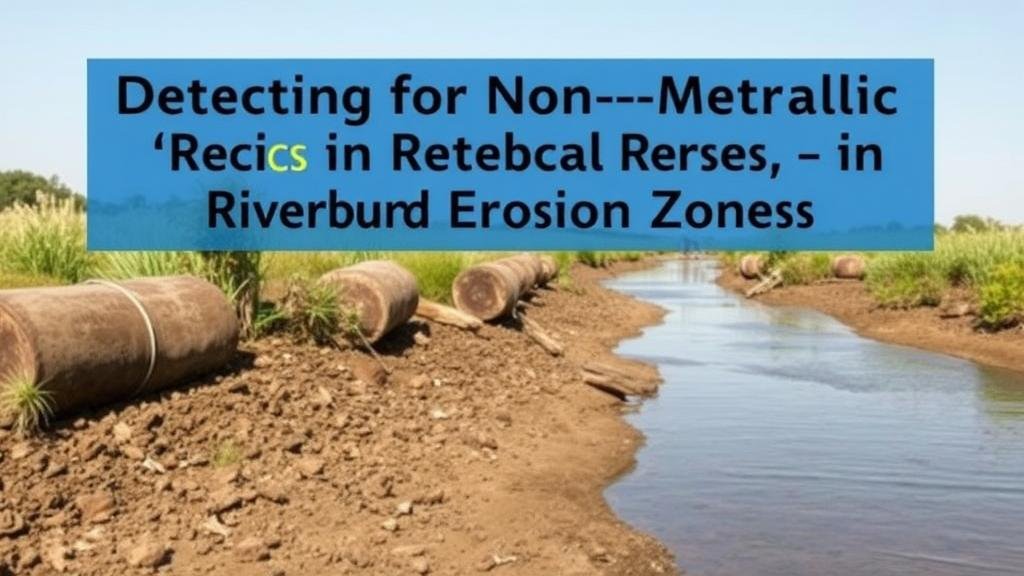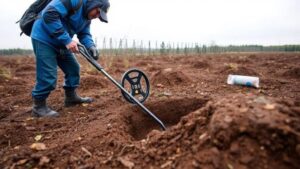Detecting for Non-Metallic Relics in Riverbank Erosion Zones
Detecting Non-Metallic Relics in Riverbank Erosion Zones
Non-metallic relics, including artifacts made of clay, bone, shell, wood, and other organic materials, are integral to understanding past human behaviors and environmental interactions. As riverbanks erode, these artifacts risk being washed away, creating a pressing need for effective detection methods. This article explores the challenges and methodologies associated with detecting non-metallic relics specifically in riverbank erosion zones.
Understanding Riverbank Erosion
Riverbank erosion is a natural process exacerbated by human activities, climate change, and hydrological alterations. Erosion occurs when flowing water removes soil and sediment from riverbanks, leading to the exposure of archaeological materials previously buried. Understanding this process is crucial for archaeologists and researchers working to preserve non-metallic relics.
According to the United States Geological Survey (USGS), approximately 1.5 billion tons of sediment is transported annually by rivers in the United States alone, highlighting the magnitude of eroded materials. Each riverbank has unique geological and hydrological characteristics that can influence the rate of erosion and the types of relics exposed.
Methods of Detection
Detecting non-metallic relics in riverbank erosion zones requires a blend of traditional archaeological techniques and modern technologies. Below are some effective methods employed in the field:
- Surface Surveying: This involves visually inspecting eroded areas for artifacts that are visible on the surface. Archaeologists may document the location and context of discovered relics to understand their significance.
- Geoarchaeological Analysis: By analyzing soil layers and stratigraphy, researchers can identify potential zones of interest where artifacts may be located. This method also evaluates past environmental conditions and human activity.
- Remote Sensing Technologies: Techniques such as aerial photography, LiDAR (Light Detection and Ranging), and thermal infrared sensors can detect physical features and anomalies in the landscape, providing insights into historical riverbank formations and potential artifact locations.
- Ground Penetrating Radar (GPR): GPR is effective for locating buried artifacts without invasive digging. This method sends radar pulses into the ground and analyzes the reflected signals to identify non-metallic materials hidden beneath the surface.
Case Studies: Successful Detection Practices
Several case studies highlight successful detection practices for non-metallic relics in erosion-prone riverbank environments.
One notable example is the archaeological research conducted along the Thames River in London. Acknowledging the rivers historical significance, researchers have employed a combination of surface surveys and GPR to uncover wooden structures and artifacts dating back to the Roman period. The findings not only inform about the daily lives of past inhabitants but also assist in ongoing preservation efforts as erosion threatens to wash these relics away.
Another instance is the detection of prehistoric artifacts along the banks of the Ohio River. Here, geoarchaeological techniques played a pivotal role in mapping sediment deposition processes and identifying locations favorable for artifact preservation. Excavations revealed a treasure trove of clay bowls and human remains, showcasing the rivers importance to the areas early inhabitants and contributing valuable insights into their culture.
Challenges in Detection
While methods for detecting non-metallic relics in riverbank erosion zones have advanced, several challenges remain:
- Seasonal Variability: Seasonal changes can affect river flow and erosion rates, complicating detection efforts. For example, high water levels may obscure areas that are otherwise accessible during lower flow periods.
- Organic Material Decomposition: Non-metallic relics made from organic materials are susceptible to rapid deterioration when exposed to moisture and environmental conditions.
- Legal and Ethical Considerations: Erosion zones may overlap with protected archaeological sites, raising concerns over the legality of excavation and the ethics of artifact recovery.
Actionable Takeaways
Detecting non-metallic relics in riverbank erosion zones requires a multifaceted approach that incorporates traditional archaeological methods and cutting-edge technology. Here are actionable takeaways for practitioners:
- Use Multiple Detection Methods: Employ a combination of surface surveying, geoarchaeological analysis, and remote sensing technologies to maximize the chances of locating artifacts.
- Collaborate with Geologists: Partner with geologists and environmental scientists to gain a deeper understanding of erosion processes and sediment deposition, enhancing detection efforts.
- Use Preservation Strategies: Develop strategies to preserve discovered artifacts, such as controlled excavations and proper storage methods in a laboratory setting.
- Engage Local Communities: Involving local communities in detection efforts can foster awareness of the significance of these relics and enhance preservation initiatives.
To wrap up, detecting non-metallic relics in riverbank erosion zones presents significant challenges and opportunities. It is essential for archaeologists and researchers to continually refine their methodologies while collaborating across disciplines to safeguard our cultural heritage from the relentless forces of nature.



